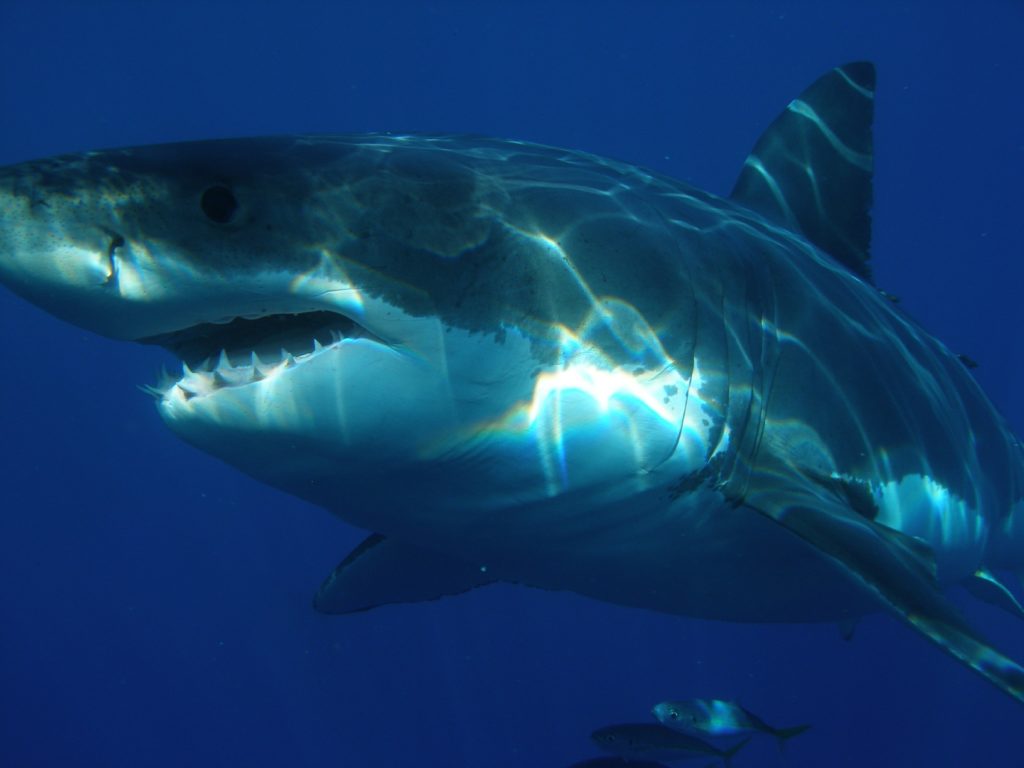Great white sharks: How do they hunt?
by Scott Dutfield · 13/02/2020

Explore how these ultimate hunting machines track and catch their prey
The great white shark, or Carcharodon carcharias, can only be described as the largest predatory fish in the sea. But is this aquatic marauder as fearsome as the popular media would have us believe?
It’s certainly a species long in the tooth, in more ways than one. Firstly each of its incisors is a perfect cutting implement, triangularly serrated on both sides. These can grow up to as long as three inches. Upon maturity an adult great white can have anywhere up to 3,000 teeth jam-packed within its gaping jawline.
The way in which this and its teeth operate accordingly is truly remarkable. The great white shark has a floating jaw, enabling it to hold onto its prey with the lower part, as the upper jaw clamps down, tearing away flesh. Couple this with great white sizes reported up to as big as 20-feet or more, carrying weight of up to 2,240 kilograms, or 4,938lb, and that’s one killer bite.
The great white’s anatomy almost contradicts itself. With a torpedo-shaped torso, it propels itself with its powerful tail, reaching speeds up to 15 miles per hour. These sharks move much like aircrafts, less like conventional swimming fish species. Yet this momentum is used at an advantage, and the great white shark shows strategy in swiftly surprising prey from below. This usually consists of inflicting a fatal bite, which will sees its prey either die of shock or massive body trauma.
It’s apparent that this species of shark has evolved into a remarkable hunting machine, quite literally the bloodhound of the sea. The great white has developed the most diverse array of sensors of any known predator.
Hunting techniques
Smelly vision
A super sense of smell is the primary detector for the shark species when hunting prey. The great white can amazingly smell a single drop of blood in 100 litres of water.
Electric impulse
Jelly-filled canals in the shark’s head help detect electrical charges as small as 0.005 microvolts. Enough to detect the heartbeat of hiding fish.
Super hearing
Rapid, irregularly pulsed, broadband sounds at frequencies below 600 hertz, made by injured prey and spawning fish, can alert hunting sharks from over one mile away.
Touch-at-distance
A row of fluid-filled sensory canals on either side of the body responds to changes in pressure and movement, helping it feel the presence of objects in the water.
Swallow or spit
The great white shark has advanced taste receptors located on the swellings in the mouth and gums. These help determine the palatability of its food.
This article was originally published in How It Works issue 1
For more science and technology articles, pick up the latest copy of How It Works from all good retailers or from our website now. If you have a tablet or smartphone, you can also download the digital version onto your iOS or Android device. To make sure you never miss an issue of How It Works magazine, subscribe today!




